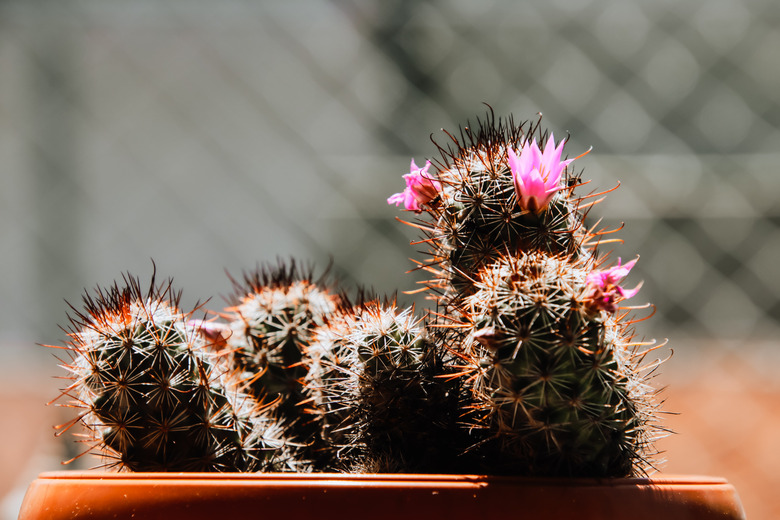How To Make A Cactus Flower
We may receive a commission on purchases made from links.
Cacti (family Cactaceae) can make excellent houseplants — resilient and hardy. They bloom only during a particular season of the year, depending on the specific type of cactus. Making a cactus flower can be challenging, but with patience and encouragement, you can enjoy exciting results.
Cacti bloom in the wild and may not bloom in your house as easily since indoor conditions differ so much from the natural cactus habitat. When choosing a new cactus, find one that's currently blooming. This shows that it's mature and able to bloom in the future. The blooms themselves don't last long — possibly for only 24 hours and at times for up to two weeks. Some cacti may not bloom for up to 30 years.
Sunlight Is Essential
Sunlight Is Essential
Cacti are accustomed to intense desert sun. To encourage a sluggish cactus to bloom, make sure the lighting mimics what it has in the wild by placing it in direct sunlight by a window. The most ideal location is a south-facing window, but if you don't have one, position the cactus so it gets at least six hours of direct sunlight per day. If you feel your cactus isn't getting enough sunlight, try a grow light for a boost.
Monitor the plant's response to its environment. With too little light, the cactus will either start growing toward the light or will show signs of discoloration on the stem or leaves. Distress from too much sunlight will resemble a sunburn with rough patches and possibly calluses that appear darker in color. Other signs of too much sunlight include fading to a lighter shade of green or other discolorations.
Do Not Overwater
Do Not Overwater
House cacti are often accidentally overwatered, which can affect flowering. In the desert it rains only a few times a year. Cacti are accustomed to storing their own water supply in their stem and leaves. As a rule of thumb, they need to be watered only once a week or even less often. Check the soil before watering. If the top layer of the potted soil is dry, it's time for water. If it's damp, skip the watering and continue checking daily.
Make sure the pot drains well — which usually requires one or more drainage holes. Additionally, use potting soil that's specific to cacti, because regular potting soil retains more water. Too much water can lead to root rot, which results when roots remain immersed in water, causing serious injury to the plant. Symptoms of an overwatered cactus are limpness, wilting and softness in the stem and limbs of the plant.
Try Adding Fertilizer
Try Adding Fertilizer
Cacti can benefit from fertilizer that replenishes nutrients in the soil. If a cactus has been in the same pot for a significant amount of time, the soil nutrients may be depleted since the cactus has already absorbed them. Using a fertilizer created specifically for cactus plants — like Dr. Earth 5-5-5 fertilizer — is best.
If using general plant fertilizer, choose one that is low in nitrogen and high in phosphorus. It's very important to dilute the fertilizer to half or a quarter strength, because full strength is too potent. Fertilize during its growing season — and only once or twice a year. A great rule of thumb is to start slow and add a small amount. See how your cactus reacts, and add more if you think your cactus is tolerating it well.
Giving your cactus some TLC and careful monitoring will help coax the plant into producing blooms that will be worth the wait.
